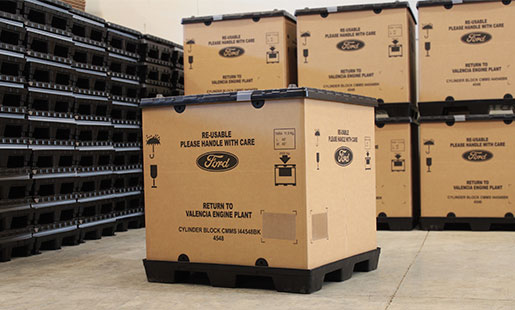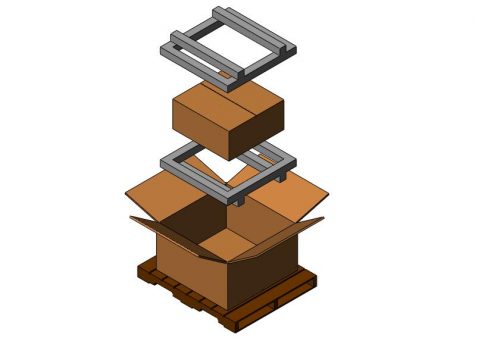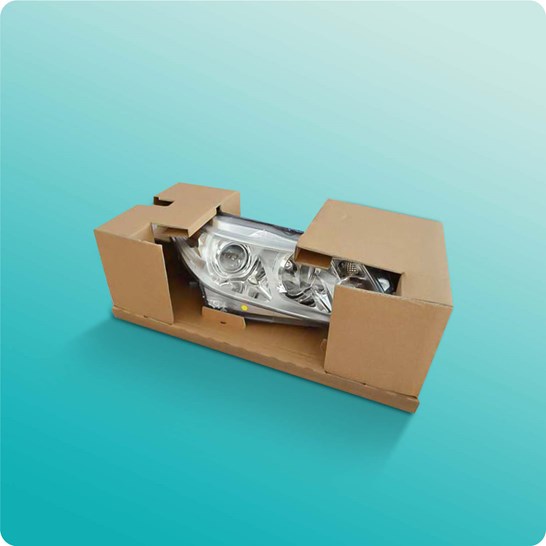Streamlining Procedures: The Power of a Trusted Processing Company
Effective Industrial Recycling Solutions for Lasting Packaging: A Comprehensive Overview
In today's increasingly environmentally-conscious globe, the need for lasting product packaging options has never been greater. To satisfy this need, companies throughout markets are actively seeking efficient commercial recycling solutions. Nevertheless, navigating the complex landscape of lasting product packaging can be testing without a thorough overview. That's where this detailed overview on reliable commercial recycling options for lasting product packaging can be found in. By checking out essential locations such as packaging product choice, making for recyclability, carrying out reusing framework, teaming up with reusing companions, and monitoring and measuring reusing success, this overview will equip you with the expertise and devices essential to make informed decisions and drive favorable modification within your organization. Whether you're a product packaging specialist, sustainability manager, or simply thinking about the subject, this guide will certainly offer beneficial understandings and techniques to help you navigate the globe of sustainable packaging.
Packaging Material Choice
The option of packaging materials plays a crucial duty in making sure the sustainability of commercial reusing remedies. The option of materials is essential in lessening ecological impact and optimizing reusing performance when it comes to sustainable product packaging. Picking the appropriate materials can aid decrease waste generation, conserve resources, and promote a round economic situation.
One important factor to consider in product packaging product option is recyclability - bulk container recycling. Materials that can be quickly recycled and incorporated back right into the production cycle are liked. Materials like cardboard, paper, glass, and certain kinds of plastics can be recycled several times without losing their top quality. On the other hand, materials that are challenging to reuse, such as combined plastics or non-recyclable composites, can develop challenges for the reusing process and might end up in burners or landfills.
Another factor to consider is making use of naturally degradable and sustainable products. Packaging made from eco-friendly resources, such as plant-based plastics or biopolymers, can help in reducing reliance on fossil gas and minimize climate change. Additionally, eco-friendly products damage down naturally in time, minimizing the build-up of waste in land fills.
Furthermore, the weight and quantity of packaging products must be lessened to lower transport costs and power consumption. Lightweight products not just need less sources during manufacturing however likewise add to decrease carbon exhausts throughout transport.
Creating for Recyclability
In order to guarantee the recyclability of product packaging products, thoughtful style is essential. Creating for recyclability involves developing product packaging that can be easily arranged, separated, and refined in reusing facilities. One vital facet of developing for recyclability is the option of materials. Packaging designers must focus on the use of materials that are commonly approved for reusing and have established recycling facilities. Materials such as glass, aluminum, and specific sorts of plastic, like PET and HDPE, are frequently reused and should be favored over products that are tough or costly to recycle.
One more vital factor to consider in developing for recyclability is the removal of unneeded components or materials. By reducing the variety of layers, finishes, and additional components, packaging can be made easier and less complicated to recycle. Additionally, designers must intend to reduce using combined products, as they can complicate the recycling process.

Implementing Recycling Framework
Reliable application of reusing facilities is crucial for the success of commercial recycling solutions. Without appropriate facilities in area, the reusing process comes to be inefficient and inefficient, impeding the general objective of sustainable packaging.
To carry out recycling framework efficiently, several essential factors require to be considered. To start with, there should be an efficient collection system that helps with the splitting up and collection of recyclable materials. This can include marked recycling bins in public areas, as well as partnerships with waste administration companies for curbside pickup and sorting.
As soon as accumulated, more tips here the recyclable products need to be transferred to recycling facilities in a timely manner. This calls for efficient logistics and transport networks, ensuring that the materials get to the suitable facilities without delay.
At the reusing facilities, progressed sorting and handling modern technologies need to remain in location to divide various sorts of products successfully. This consists of making use of automated sorting makers, optical scanners, and hands-on sorting strategies.
Additionally, there ought to be a durable market need for recycled materials. This can be attained with cooperations with suppliers and industries that make use of recycled products in their manufacturing processes. Producing a steady market for recycled products incentivizes the recycling market and promotes the round economy.
Collaborating With Recycling Allies

One key facet of working together with reusing partners is the facility of clear interaction channels. It is very important to establish open lines of interaction to facilitate the exchange of details, updates, and responses. This enables both events to remain notified about the progression of recycling efforts and deal with any type of challenges or problems that may emerge.
In addition, partnership can include joint efforts in applying and developing reusing programs. Recycling partners can offer beneficial insights and advice in establishing reliable collection systems and determining one of the most ideal recycling innovations. By functioning together, companies and recycling companions can maximize the reusing process and decrease waste.
Furthermore, cooperation can prolong past the operational aspects of recycling. It can also encompass advocacy and education and learning campaigns. By joining forces, companies and recycling companions can raise understanding about the importance of recycling and advertise the adoption of sustainable packaging techniques among consumers and other stakeholders.
Tracking and Measuring Recycling Success
To guarantee the efficiency of industrial recycling remedies and the success of lasting packaging goals, it is vital for businesses and their reusing companions to establish a comprehensive system for monitoring and gauging recycling success (processing company). Determining and tracking recycling success allows organizations to analyze the effect of their recycling initiatives, identify locations for improvement, and set meaningful targets for future progression
One method to track recycling success is through using data collection and evaluation tools. By accumulating data on the quantity of packaging waste produced, the percentage of waste that is reused, and look at this web-site the kinds of products being recycled, services can obtain important understandings right into their reusing efficiency. This information can then be examined to determine trends, patterns, and areas of ineffectiveness.
An additional crucial element of monitoring and measuring recycling success is developing clear and standardized metrics. This allows organizations to compare their efficiency versus market benchmarks and track their progress gradually. Metrics such as recycling rates, waste diversion rates, and greenhouse gas emissions can offer a measurable step of a service's recycling success.

Conclusion
In conclusion, carrying out efficient commercial recycling remedies for lasting packaging requires mindful factor to consider of product packaging product selection, making for recyclability, implementing recycling framework, working together with reusing partners, and monitoring and gauging reusing success. By including these methods, organizations can add to a more sustainable and environmentally-friendly strategy to product packaging, minimizing waste and promoting the circular economic climate.
By useful content exploring crucial areas such as packaging material option, designing for recyclability, carrying out reusing infrastructure, working together with reusing companions, and monitoring and gauging recycling success, this guide will certainly equip you with the knowledge and tools needed to make educated decisions and drive positive modification within your organization. Product packaging developers need to prioritize the usage of products that are widely accepted for reusing and have established reusing frameworks.Collaboration with reusing partners is essential for the effective application of commercial recycling options and the success of sustainable product packaging objectives. By signing up with pressures, organizations and reusing companions can raise recognition regarding the importance of reusing and advertise the fostering of lasting packaging methods amongst consumers and other stakeholders.
By accumulating information on the quantity of packaging waste created, the percentage of waste that is reused, and the types of products being reused, companies can gain beneficial understandings into their reusing performance.